Heat pump water heaters: The overlooked energy saver
With Texas summers pushing your AC to the limit and energy bills climbing higher each year, finding ways to cut costs without sacrificing comfort is more important than ever. See how heat pump water heaters can help.
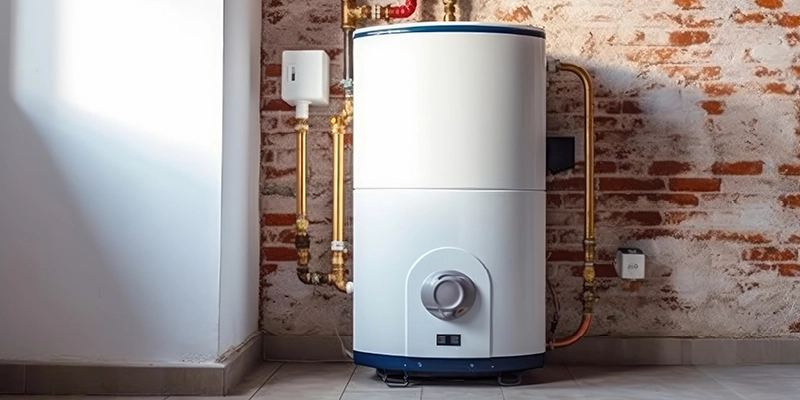
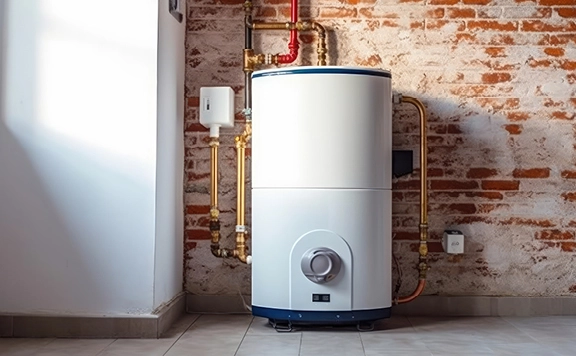
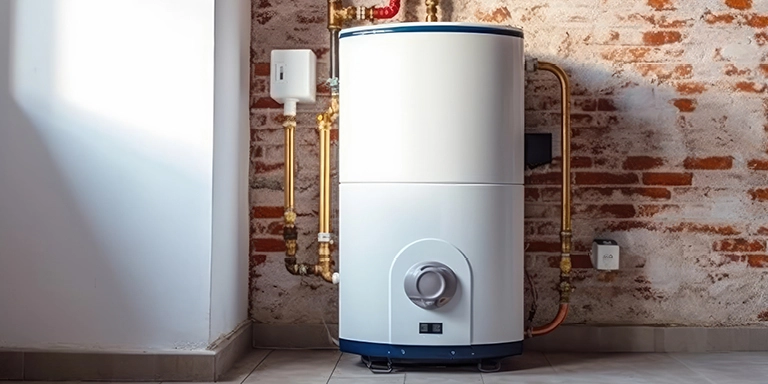
Heat pump water heaters: The overlooked energy saver
With Texas summers pushing your AC to the limit and energy bills climbing higher each year, finding ways to cut costs without sacrificing comfort is more important than ever. See how heat pump water heaters can help.
One upgrade that’s gaining momentum, but still isn’t on every homeowner’s radar is the heat pump water heater. This energy-efficient technology can reduce your water heating costs by up to 60%,i and it’s especially effective in Texas’ warm climate. In this guide, we’ll break down how it works, why heat pump water heaters work well in Texas homes and how you can take advantage of local rebates and long-term savings.
Before you can decide if a heat pump water heater is right for your home, it helps to understand how it works. This section breaks down the basics of the technology, the key components involved and the different types available so you can feel confident in your choice.
Imagine your refrigerator in reverse—pulling heat from the air and transferring it into your water tank. That’s the core idea behind a heat pump water heater. Instead of generating heat directly, it uses a compressor and refrigerant system to move heat, which requires significantly less electricity than traditional models.
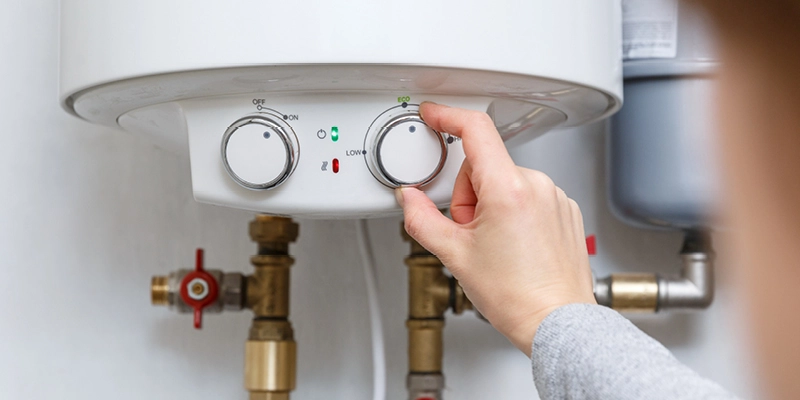
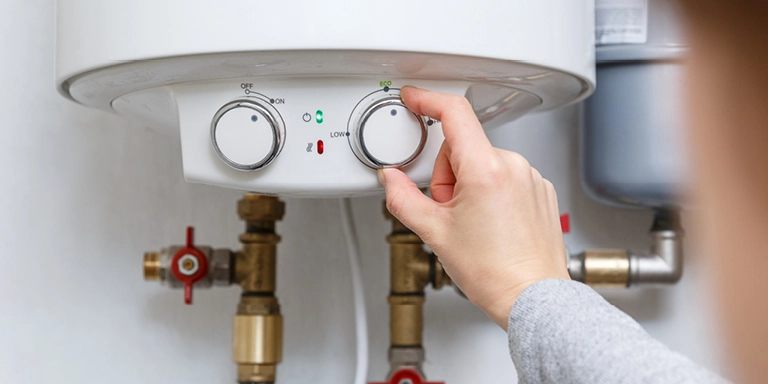
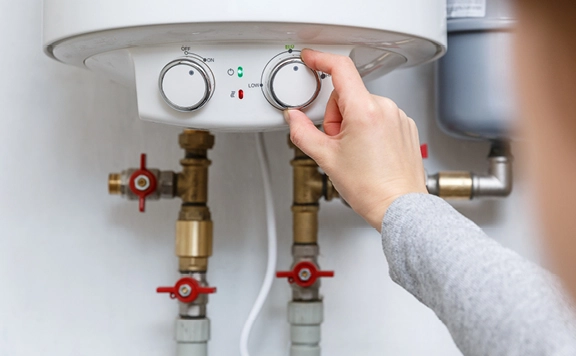
Texas homes have a unique advantage when it comes to heat pump water heaters. Thanks to our warm climate and long cooling seasons, these systems operate more efficiently here than in many other parts of the country. Let’s explore why that matters for your comfort and your wallet.
Texas’ warm climate gives heat pump water heaters a major efficiency boost. These systems perform best in environments where the ambient air temperature stays above 40°F, making most Texas garages, utility rooms and attics ideal installation spots.
During the summer, heat pump water heaters help cool the surrounding air slightly, which is a bonus in garages or laundry rooms. And because they don’t rely on combustion, they’re safer and cleaner than gas models.
Even in cooler months, Texas’ mild winters allow heat pump systems to operate efficiently without relying heavily on backup heating elements.
Water heating typically accounts for about 18% of a home’s energy use.ii By switching to a heat pump water heater, you could cut that portion of your bill by more than half.
Bottom line on heat pump water heaters: Heat pump water heaters are 2–3 times more efficient than traditional models, offering significant long-term savings.
UEF, or Uniform Energy Factor, is a standardized way to measure how efficiently a water heater converts energy into hot water. The higher the UEF, the more efficient the unit is and the more you can save on energy costs.
Think of it like miles per gallon for your car. A higher MPG means you get more distance from every gallon of gas. Similarly, a higher UEF means you get more hot water from every unit of energy.
While upfront costs for a heat pump water heater are higher (typically $1,500–$3,000 installed), rebates and energy savings often result in a payback period of 3–5 years. Over a 10-year lifespan, that’s $3,000–$4,000 in savings, not including potential rebates or incentives.
Installing a heat pump water heater isn’t one size fits all. From space requirements to local building codes, there are a few things to keep in mind, especially in Texas homes where garages, attics and utility rooms vary widely. Here’s what you need to know before making the switch.
Heat pump water heaters work best in areas with:
In Texas, common installation spots include garages, utility closets and attics—if there’s enough ventilation and clearance. If space is tight, a split system may offer more flexibility.
Tip: Avoid installing in small, enclosed spaces unless ducting or ventilation is added.
While some experienced homeowners may consider a DIY approach, professional installation for a heat pump water heater is strongly recommended. A licensed contractor can:
Most heat pump water heaters can connect to your home’s existing plumbing and electrical systems with minimal modifications. However, older homes may require:
Your installer can assess your setup and recommend any necessary changes.
Not all heat pump water heaters are created equal. Whether you’re shopping for a family of two or six, learn how to choose the right size, efficiency rating and features to match your home’s needs and your energy goals.
Many models offer:
A little routine care can go a long way, helping your heat pump water heater run more efficiently, last longer and save you more over time. Here’s what to expect in terms of maintenance, lifespan and common issues—plus tips for keeping your system in top shape for years to come.
To keep your system running smoothly, plan for a few simple maintenance tasks:
Most heat pump water heaters last 10–15 years, and many come with 6–10-year warranties. With proper maintenance, you can often reach the upper end of that range. Don’t forget to register your unit with the manufacturer to take full advantage of warranty coverage.
While these systems are reliable, here are a few issues you might encounter—and what they could mean:
To keep your system running at peak performance, schedule a yearly inspection with a licensed technician. They can catch small issues before they become costly repairs and help ensure your water heater continues to deliver reliable, energy-efficient performance.
Plumbing Essentials
(Water Heat Protect)
Explore our suite of Plumbing Protect plans, including Water Heat Protect, and protect your home from the repair costs of leaks, stoppages and pipe breaks.
If you’re looking to reduce your carbon footprint, a heat pump water heater is a smart choice. Learn how this technology supports clean energy goals in Texas and how it pairs with solar systems for even greater impact.
Switching to a heat pump water heater is one of the most impactful upgrades you can make for your home’s energy efficiency. These systems use up to 70% less electricityiii than traditional electric models, which can reduce your household’s carbon footprint by up to 2 metric tons per year—the equivalent of growing 17 trees for 10 years.iv
That means you’re not just saving money, but you’re also making a meaningful contribution to a cleaner, healthier environment.
Looking to take your energy savings even further? Heat pump water heaters pair perfectly with solar energy solutions. By using solar power to run your water heater, you can reduce your reliance on the grid and lower your utility bills even more.
If your home qualifies for net metering, you may also earn credits for excess solar energy, making your investment in clean energy work even harder for you.
Every energy-efficient upgrade helps reduce demand on the Texas power grid, especially during peak usage times. By choosing a heat pump water heater, you’re supporting a more resilient, sustainable energy future for your community and generations to come.
You’ve done the research—now it’s time to act. Whether you’re ready to install a heat pump water heater or just want to explore your options, we’re here to help every step of the way. Here’s how to get started.
Start by reaching out to local HVAC or plumbing professionals for installation estimates. Be sure to:
Tip: Some installers may also offer financing options or bundle pricing with other energy-efficient upgrades.
Most heat pump water heater installations take 1–2 days, depending on your home’s layout and electrical setup. If your installation requires panel upgrades or additional ventilation, your contractor can walk you through the timeline and any prep work needed.
Once your new heat pump water heater is installed, it’s a great time to make sure your electricity plan is working just as efficiently. Reliant offers tools and services to help you get the most out of your energy-saving upgrades.
Here’s how we can help:
Heat pump water heaters are a smart, sustainable upgrade for Texas homes—and Reliant is here to help you make the most of it. Trust us as your partner in powering a more efficient future.
Select a category from the dropdown menu.